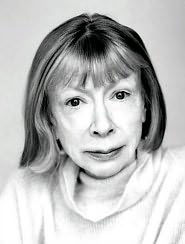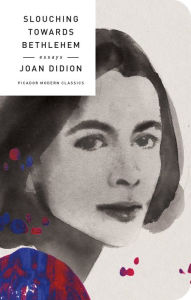One of the strongest voices in American letters, Joan Didion has made her mark with fiercely intelligent novels (Play It As It Lays, A Book of Common Prayer), insightful nonfiction (Salvador, Political Fictions), and screenplays co-written with her late husband, John Gregory Dunne (Panic in Needle Park, Up Close and Personal).
Born in Sacramento, Didion attended the University of California at Berkeley, graduating in 1956 with a degree in English. After college, she moved to New York to work for Vogue magazine. Recognized immediately as a talented and insightful writer, she contributed frequently to such diverse publications as Mademoiselle, Esquire, The New York Times, and National Review; and in 1963 she published her first novel, Run River. She and Dunne were wed in 1964; and for the remainder of their married life, they divided their time between New York and L.A., collaborating frequently on Hollywood scripts while developing separate and distinguished literary careers.
In December of 2003, Dunne died of a massive heart attack, while the couple's recently married daughter, Quintana Roo, lay comatose in a New York hospital. Didion spent the next year blindsided by a grief so profound it propelled her into a sort of madness. She chronicled the entire experience in The Year of Magical Thinking, a spellbinding memoir of bereavement written in the spare, elegant prose that has become a hallmark of her work. Published in 2005 (scant months after Quintana's death), this elegiac book -- Didion's most personal and affecting work to date -- became a huge bestseller. It received a National Book Award and was turned, two years later, into a successful Broadway play starring Vanessa Redgrave.
Since her 1963 debut, Didion has alternated between novels and nonfiction, proving herself a wry and astute observer of America's shifting political and cultural landscape. Written nearly a decade apart, her two essay collections Slouching Towards Bethlehem (1968) and The White Album (1979) are considered classics of 1960s counterculture. Moreover, the author's identity as a seventh-generation Californian has colored her writing in profoundly significant ways. For our money, no contemporary American writer has examined more deftly the unique role of "place" in everyday life.










